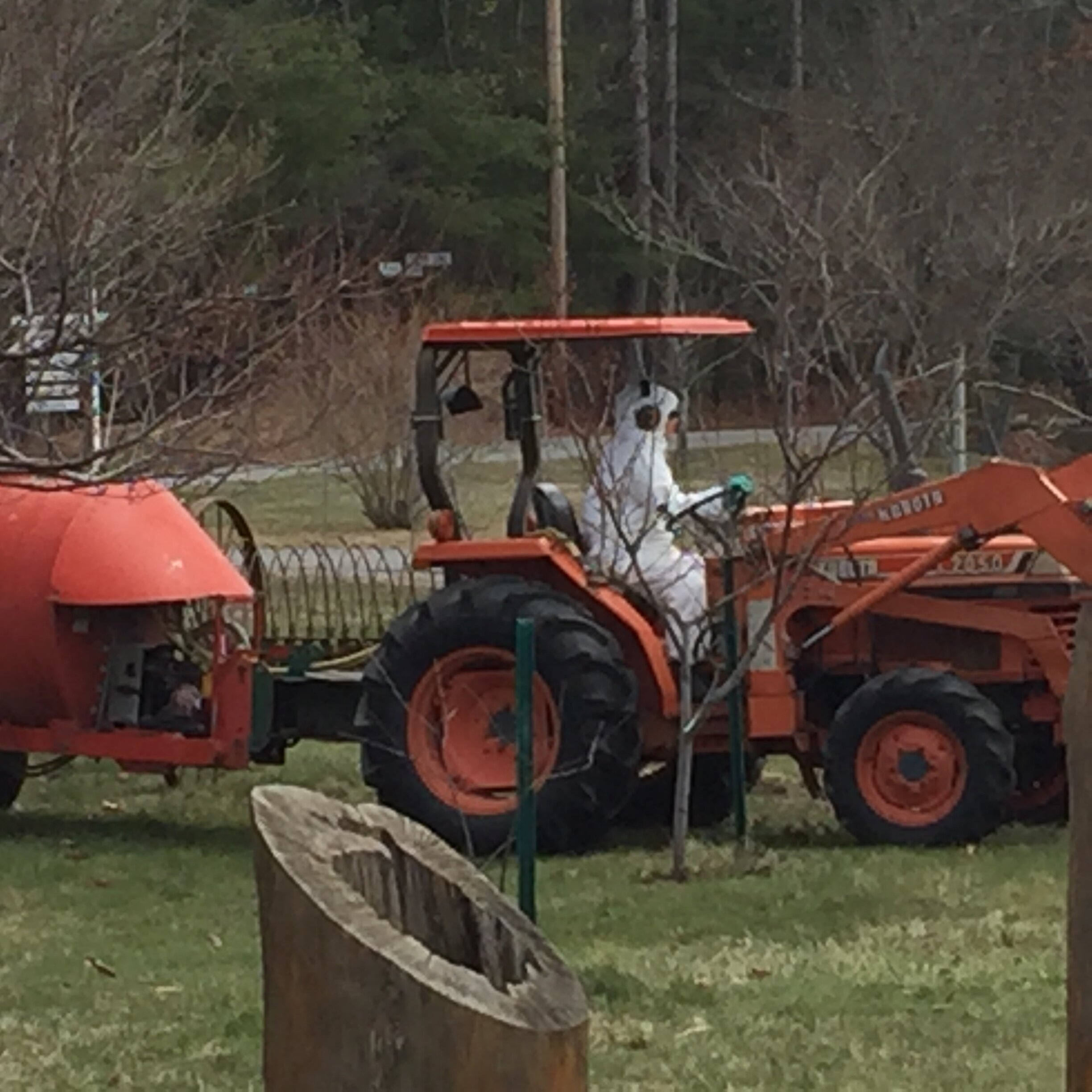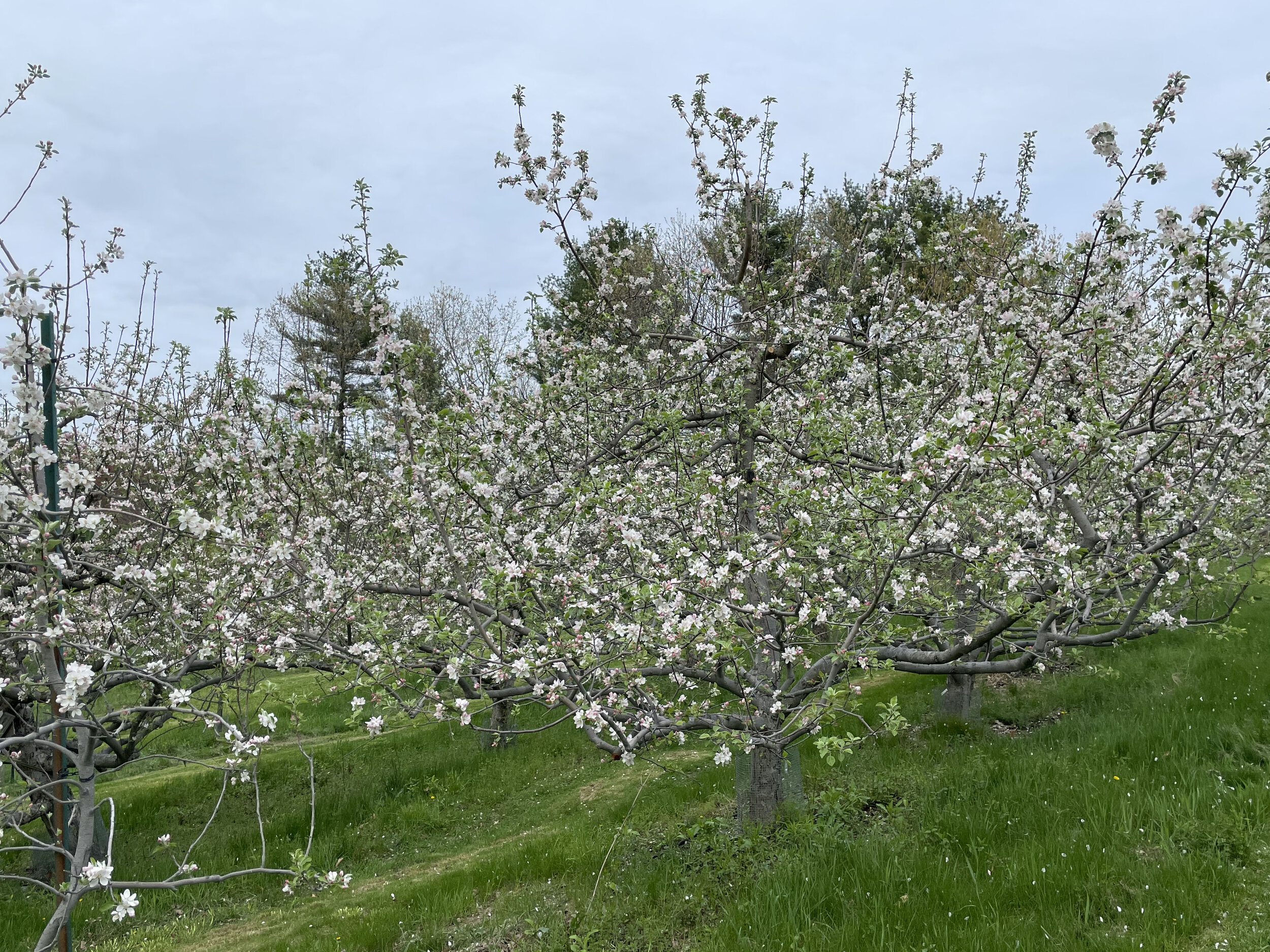As an apple orchardist I pay attention to the buds. Will they be strong? Are they healthy? How will I take care of them, because I know—left alone, an orchard in New England will become a massive tangle of brambles, invasive vines, and diseased fruit.
We’ve already sprayed the apple trees with fish fertilizer, seaweed, a little copper, and two different biological fungicides to make sure our buds are protected from the spring diseases. Microscopic fungal spores will rise from the soil beneath the tree in a light rain and land on the leaves. There they find purchase and grow. Once the fruit develops, the fungus jumps to the fruit, ultimately making scab-like forms covering over the developing fruit. Once infection begins, it’s hard to reverse. Spores are released over the four-to-six-week period until we reach 100% release.
Every year I have to be prepared for scab, the nickname orchardists use for the fungus, Venturia inaequalis, one of the early apple diseases and one of the worst problems for organic orchardists in New England. I remember when I first learned to spray. Suited up in protective gear, spray tank filled with 300 gallons of water and the spray materials, the tractor settings in low speed, 3rd gear, at 1700 rpms, I was told that the spray for scab needed to renewed before every wetting period. It seemed an overwhelming proposition. If it rained one day, and then four days later, I needed to spray again because the material would have washed off the trees.
First Spray
Since that time, I’ve learned to time our sprays to most effective for the maximum spore release. I’ve planted many new scab-resistant varieties in our orchard, and removed some of the scab magnet trees like Macintosh. And since 2006 when Old Frog Pond Farm received organic certification, new bio-fungicides are available for organic orchards.
Orchardists have their own language to describe the stages from bud to blossom. Dormant describes the trees in winter, when the buds are gray-brown and tightly closed. They wait for the right combination of temperature and length of daylight to awaken. The outer sheath on the bud is a winter quilt protecting the folded blossom inside. When the apple bud breaks dormancy, the covering of the fruit bud opens slightly to reveal light gray tissue, silver tip.
Then comes green tip. The buds plump in response to warmth and light. The bud opens further to reveal a green plant tissue. The next stage, half-inch green or mouse ears, is an apt description as two tiny oblong-shaped leaves appear. Tight cluster follows with a rosette of green leaves around a tightly packed flower bud. Pink stage is next, as this singular flower bud separates into five or six individual pink-sheathed blossom buds.
This is the most exciting moment in the orchard, for each of these flower buds, if pollinated, will become an apple. In the center the king blossom opens first. It’s the strongest and largest bud. The others follow; reserves for the tree in case something happens to the King. Full bloom is when all blossoms are open. Pollinators arrive from far and wide to drink sweet apple nectar and unknowingly pollinate the trees.
Our trees are in full bloom, and I won’t spray again until the petals fall. Bloom is the time when I walk through the orchard rows and feel overwhelming gratitude to be part of such fragile beauty.
May 4, 2021 Old Frog Pond Farm









